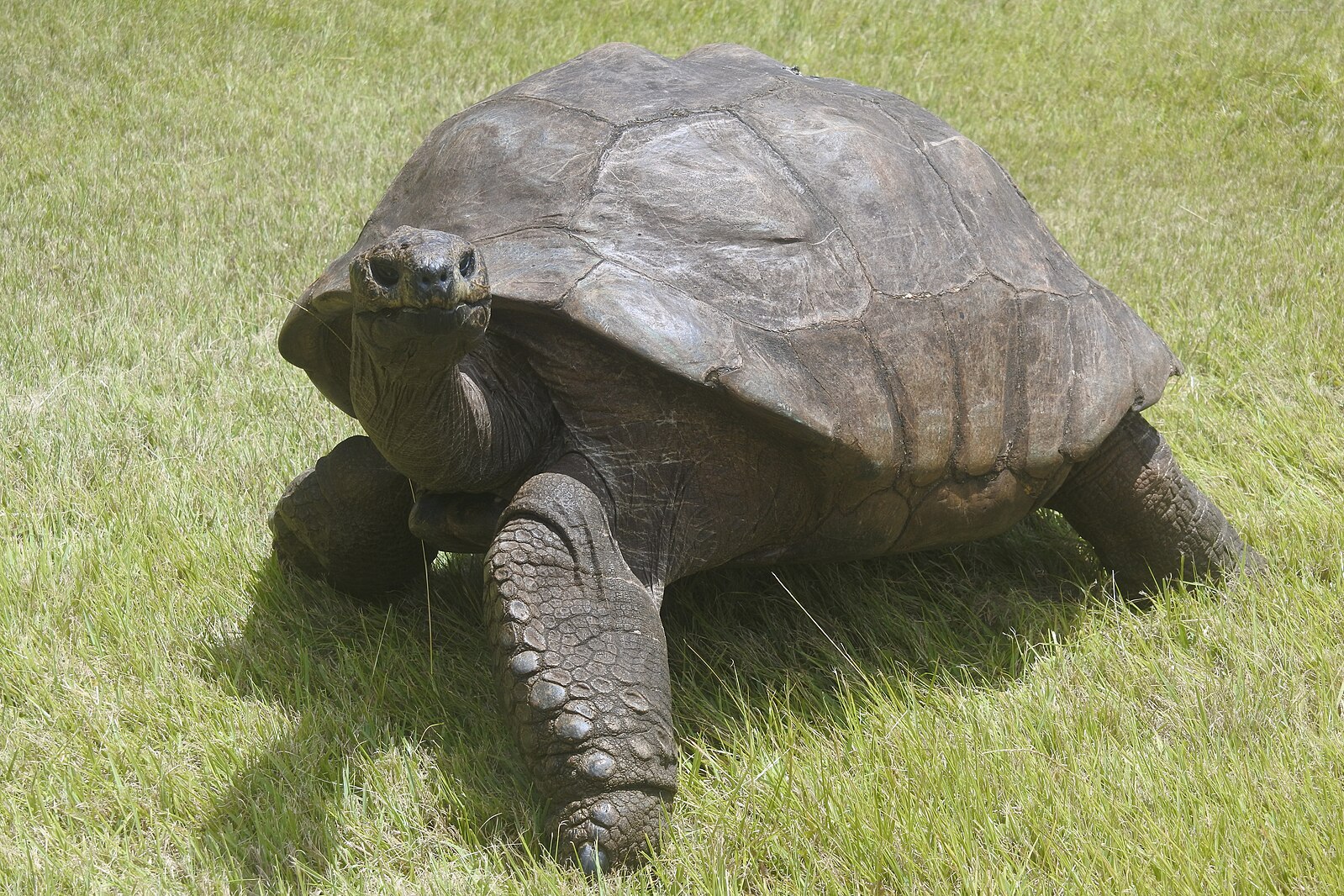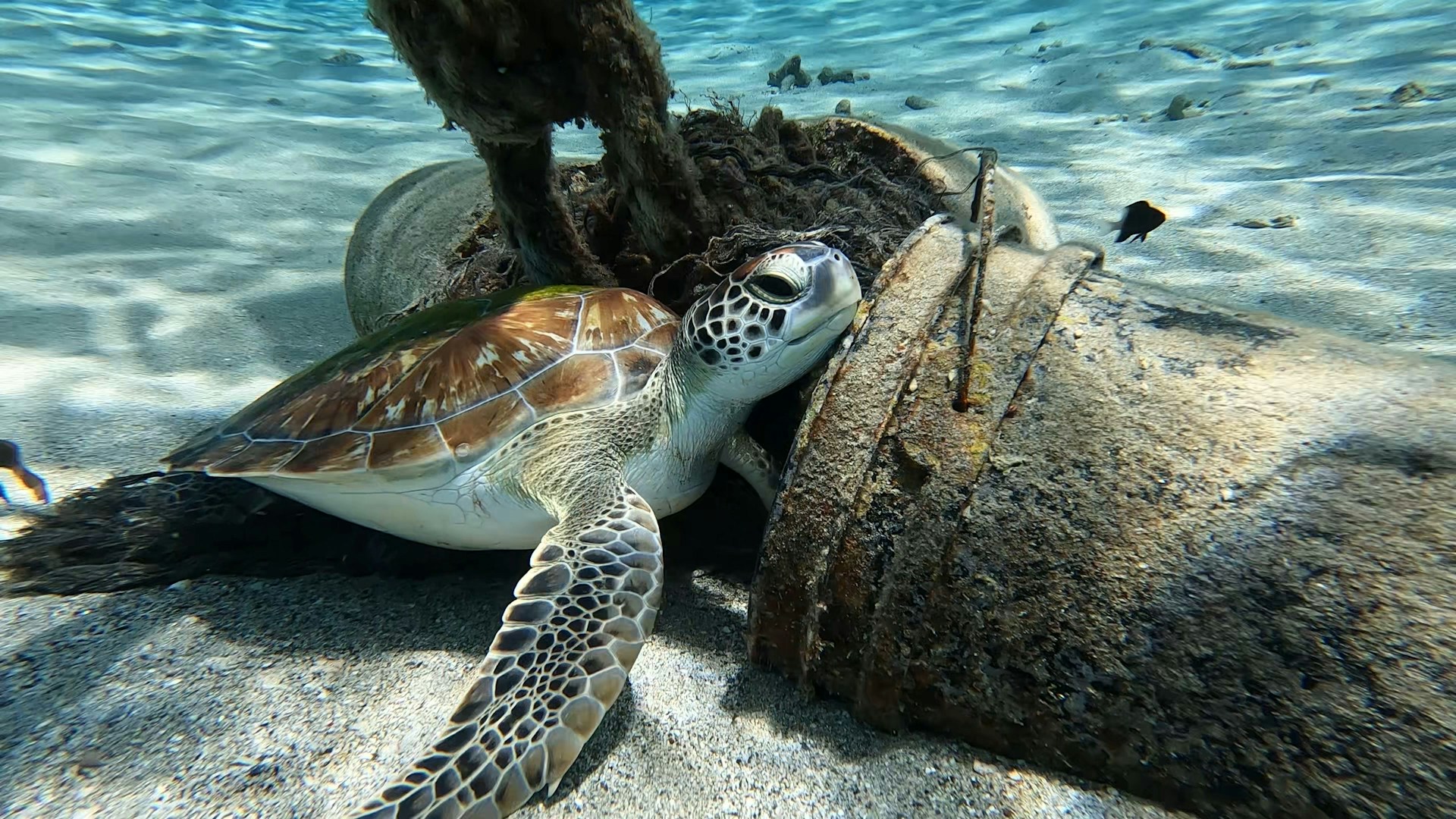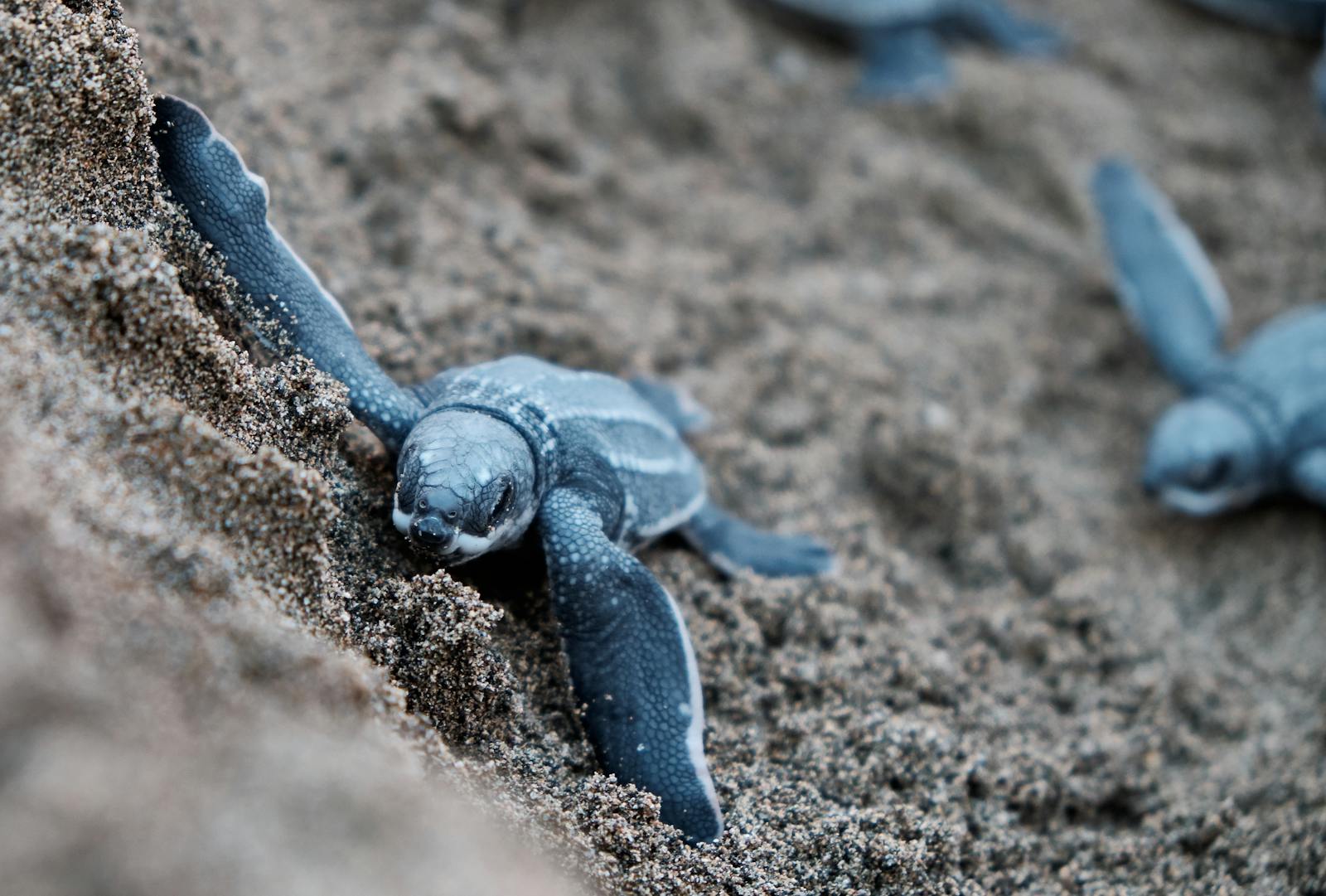In the realm of extraordinary longevity, few creatures capture our imagination quite like tortoises. These ancient reptiles, with their deliberate movements and weathered shells, have long been symbols of persistence and endurance. While humans consider reaching 100 years a remarkable achievement, certain tortoises have surpassed this milestone with apparent ease, living through multiple human generations and bearing witness to centuries of history. Among these remarkable creatures, one individual stands out for having achieved what many would consider impossible – the longest documented lifespan of any vertebrate animal on Earth. This is the story of not just impressive longevity, but of resilience, adaptation, and the remarkable biological mechanisms that allow certain species to seemingly pause the clock of time.
The Record Holder: Jonathan the Seychelles Giant Tortoise
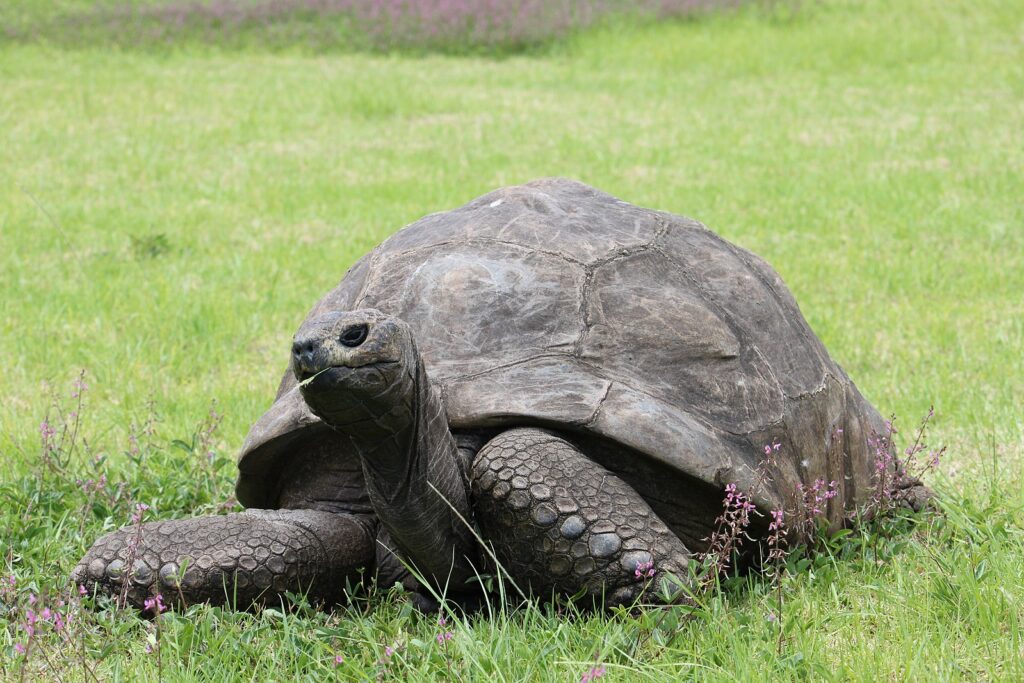
The title of oldest tortoise ever documented belongs to Jonathan, a Seychelles giant tortoise (Aldabrachelys gigantea hololissa) who continues to live on the island of Saint Helena, a British Overseas Territory in the South Atlantic Ocean. Born approximately in 1832, Jonathan has reached the astonishing age of 191 years as of 2023, making him not only the oldest known tortoise but also the oldest known living land animal. His remarkable longevity was officially recognized by Guinness World Records, cementing his place in history. Jonathan has lived through the terms of 39 U.S. presidents, the entire Victorian era, both World Wars, and countless technological revolutions from the telegraph to artificial intelligence.
Jonathan’s Early Life and Arrival on Saint Helena
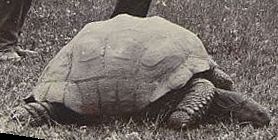
Jonathan’s exact birth date remains a mystery, but photographic evidence has helped scientists establish his approximate age. He appears in a photograph taken on Saint Helena in 1882, at which point experts estimate he was at least 50 years old based on his full size in the image, leading to the 1832 birth year estimation. Jonathan was brought to Saint Helena as a gift to the governor, William Grey-Wilson, from the Seychelles when he was already mature. His journey across the Indian Ocean and Atlantic would have been long and arduous, typically taking weeks by sailing ship during that era. Upon arrival at Plantation House, the governor’s residence on Saint Helena, Jonathan joined a small group of other giant tortoises and began what would become his permanent home for over 140 years.
Life at Plantation House
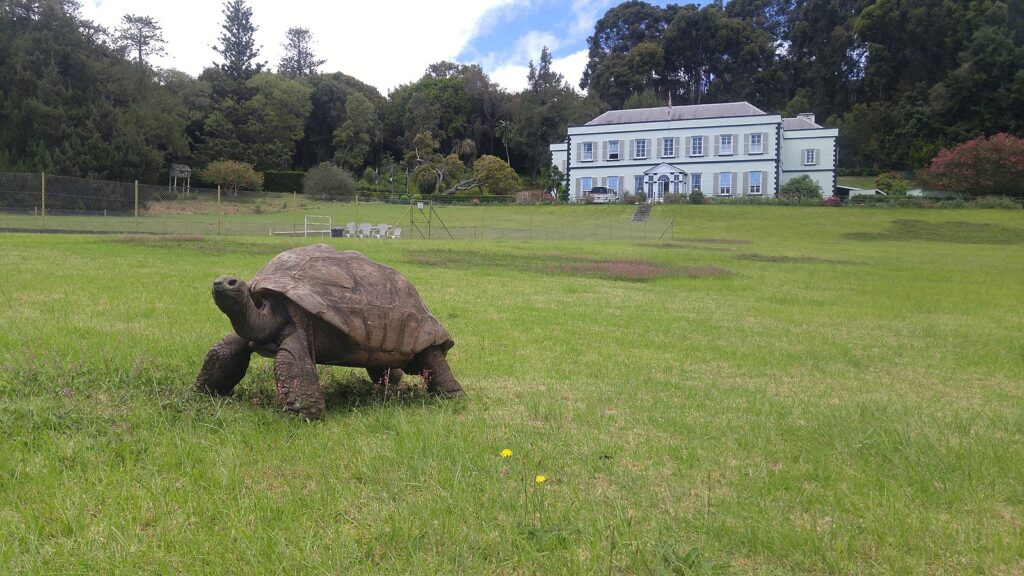
For nearly a century and a half, Jonathan has resided on the lush grounds of Plantation House, the official residence of the Governor of Saint Helena. His home features expansive lawns and gardens that provide ideal grazing conditions for a giant tortoise. Jonathan shares his spacious enclosure with three other giant tortoises: David, Emma, and Fred, though all are significantly younger than their ancient companion. The staff at Plantation House have established special care protocols for Jonathan, ensuring his habitat remains suitable for a tortoise of his advanced age. Visitors to Saint Helena often make a special trip to Plantation House specifically to catch a glimpse of the world-famous Jonathan, who has become something of a living monument and the island’s most celebrated resident.
The Biology Behind Extreme Tortoise Longevity
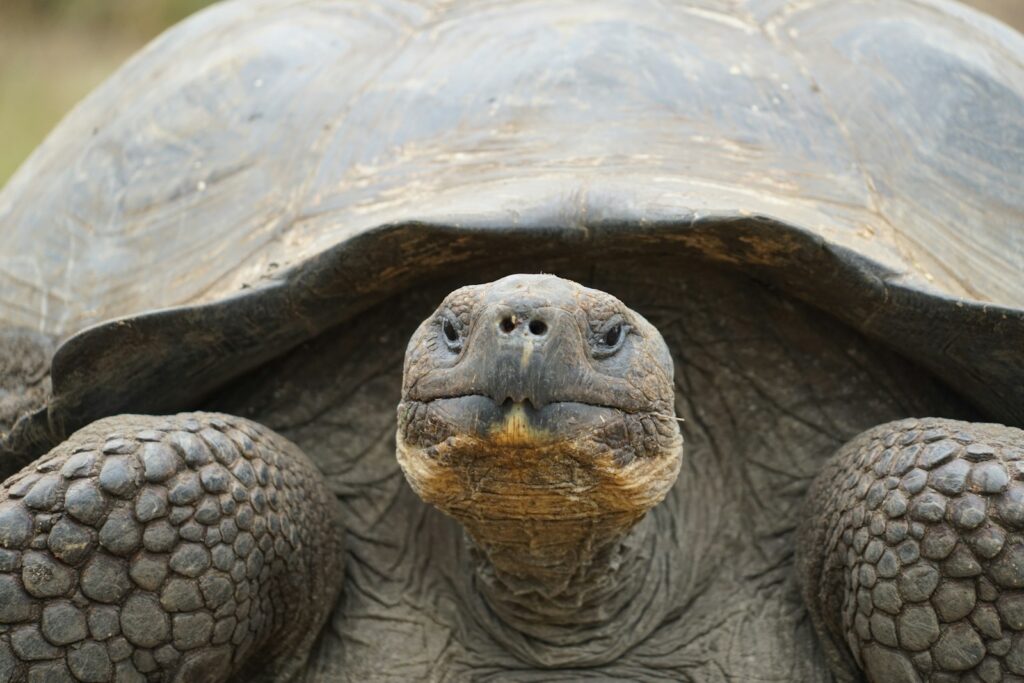
The extraordinary lifespan of giant tortoises like Jonathan stems from several biological adaptations that have fascinated scientists studying aging and longevity. These reptiles possess remarkably slow metabolic rates, which means their bodies undergo cellular damage and oxidative stress at much slower rates than mammals. Giant tortoises also demonstrate negligible senescence, a biological phenomenon where they show extremely slow or no measurable biological aging after reaching maturity. Their cells appear to maintain robust DNA repair mechanisms well into advanced age, preventing the telomere shortening associated with aging in many other species. Additionally, tortoises have evolved exceptional immune systems that continue functioning effectively throughout their extended lives, protecting them from diseases that would typically affect aging animals.
Health Challenges in Jonathan’s Later Years
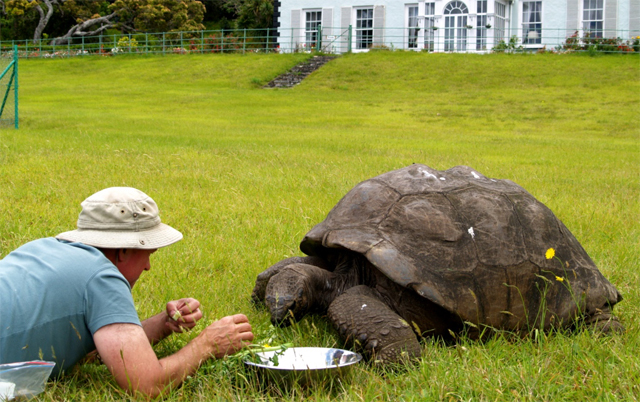
Despite his remarkable constitution, Jonathan has faced health challenges in his later years that required special veterinary intervention. By 2014, Jonathan had developed cataracts that caused him to lose his vision, making it difficult for him to find food. He also experienced difficulty with his sense of smell, further complicating his ability to forage effectively. Veterinarians noted that his beak had become blunt and soft, making it challenging for him to crop grass, his natural food source. In response to these age-related issues, Jonathan’s caretakers implemented a special feeding regimen to ensure proper nutrition. They began hand-feeding him a special diet of fruits and vegetables high in calories and nutrients, often delivered on a weekly schedule to supplement what little he could forage on his own.
Dietary Adjustments That Extended His Life
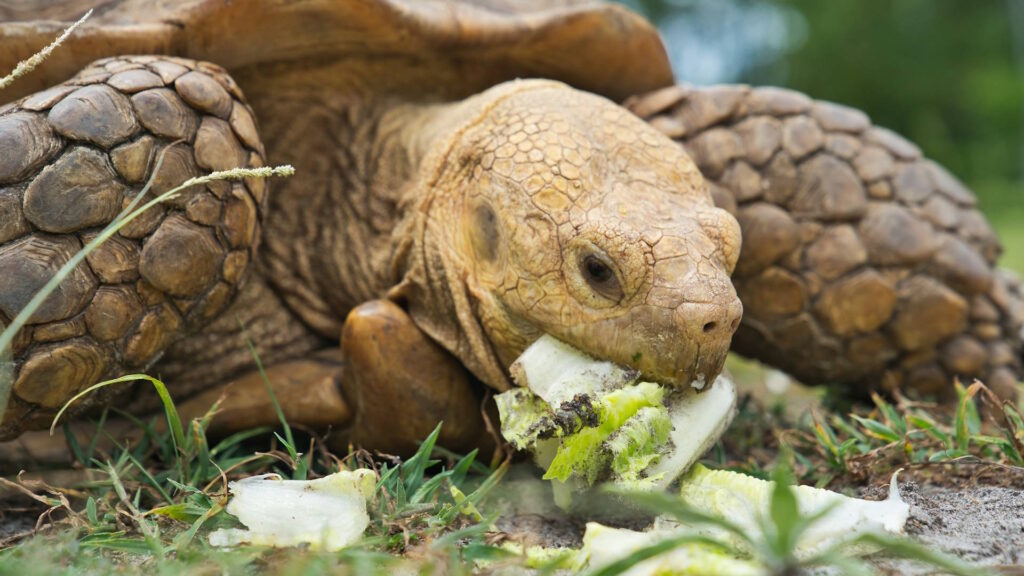
A crucial turning point in Jonathan’s later life came when veterinarian Joe Hollins noticed the tortoise’s declining health around 2009. Hollins determined that Jonathan’s diet lacked proper nutrition as he had primarily been grazing on grass, which provides insufficient nutritional value for a giant tortoise. The veterinary team developed a special diet rich in vitamin A, D, E, and calcium, incorporating calories through fruits like apples and bananas, protein from boiled eggs, and fiber from cabbage and lettuce. This dietary intervention produced remarkable results; within a few years, Jonathan’s shell, which had begun to thin and pit, regained much of its former integrity. His energy levels noticeably improved, and many observers commented on his renewed vigor and activity levels. This successful nutritional intervention likely added years to Jonathan’s already exceptional lifespan.
The Historical Events Jonathan Has Witnessed
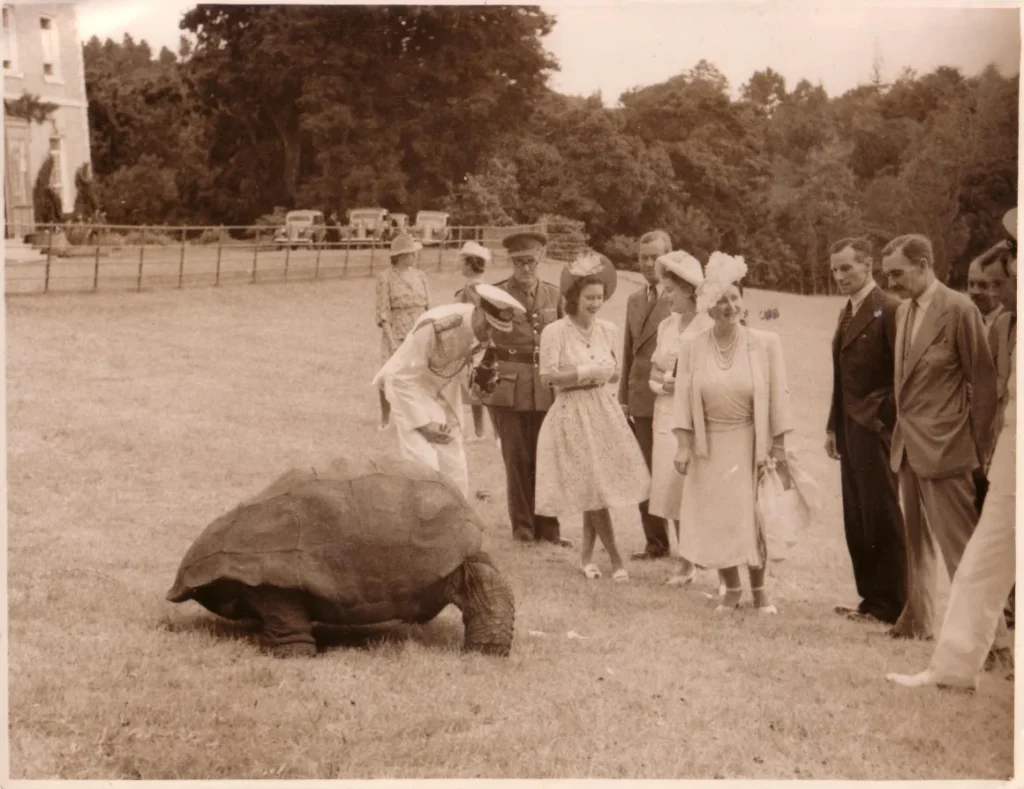
The span of Jonathan’s life encompasses some of the most transformative periods in human history, making him a living time capsule of extraordinary proportions. When Jonathan hatched, Andrew Jackson was president of the United States, the first railway was just being built in Britain, and much of the world was still unmapped. He lived through the abolition of slavery, the Industrial Revolution, the invention of the telephone, automobile, and airplane. He was already middle-aged when the Titanic sank and had reached senior status when humans first walked on the moon. Perhaps most remarkably, Jonathan has lived through the entire development of modern medicine, from the pre-antibiotic era through the discovery of DNA to today’s advanced medical technologies. His life spans the transformation from a world of horse-drawn carriages to one of space exploration and instant global communication.
Verification and Documentation of Jonathan’s Age
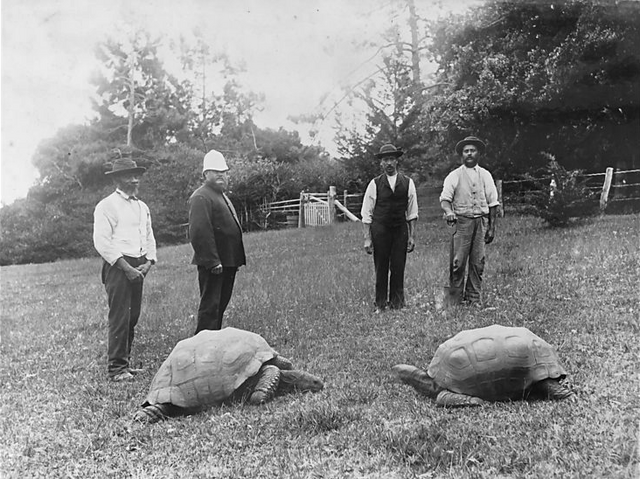
Establishing Jonathan’s precise age presented significant challenges to researchers and historians attempting to verify his record. The most definitive evidence comes from an 1882 photograph showing Jonathan at full adult size on the grounds of Plantation House. Based on growth rates and shell development patterns of Seychelles giant tortoises, scientists determined he must have been at least 50 years old at that time to have reached his full size, hence the 1832 birth year estimation. Supporting documentation includes official government records of tortoise shipments from Seychelles to Saint Helena during the appropriate period. Guinness World Records conducted an extensive verification process before officially recognizing Jonathan as the oldest living land animal. While there remains some inherent uncertainty about his exact birth year, even conservative estimates place him well above any other documented tortoise lifespan.
Competitors for the Longevity Record
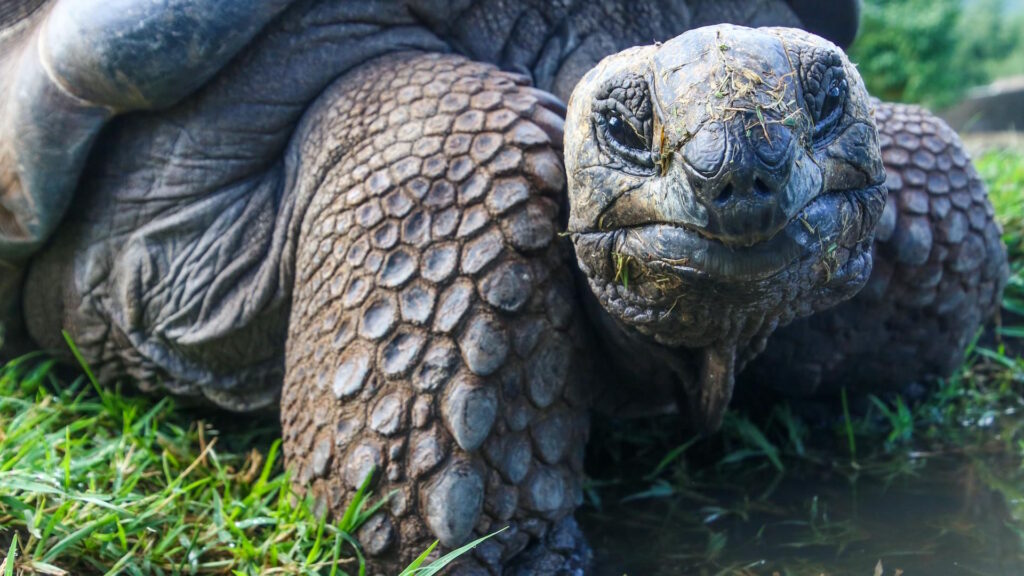
While Jonathan holds the verified record for longest-lived tortoise, several other notable contenders have made claims to exceptional longevity. Tu’i Malila, a radiated tortoise gifted to the Tongan royal family by Captain James Cook in 1777, reportedly lived to the age of 188 years until its death in 1965, though documentation for its early years remains somewhat limited. Adwaita, an Aldabra giant tortoise who resided at Kolkata Zoo, was believed to be approximately 255 years old when he died in 2006, based on historical records suggesting he was a gift to British colonial rulers in the 18th century. Harriet, a Galápagos tortoise who died in 2006 at Australia Zoo, was long believed to have been collected by Charles Darwin himself during his voyage on the HMS Beagle, though later research cast doubt on this specific connection. Despite these impressive contenders, Jonathan remains the only tortoise whose extreme age has been sufficiently documented to earn official recognition from record-keeping authorities.
The Significance of Jonathan to Saint Helena
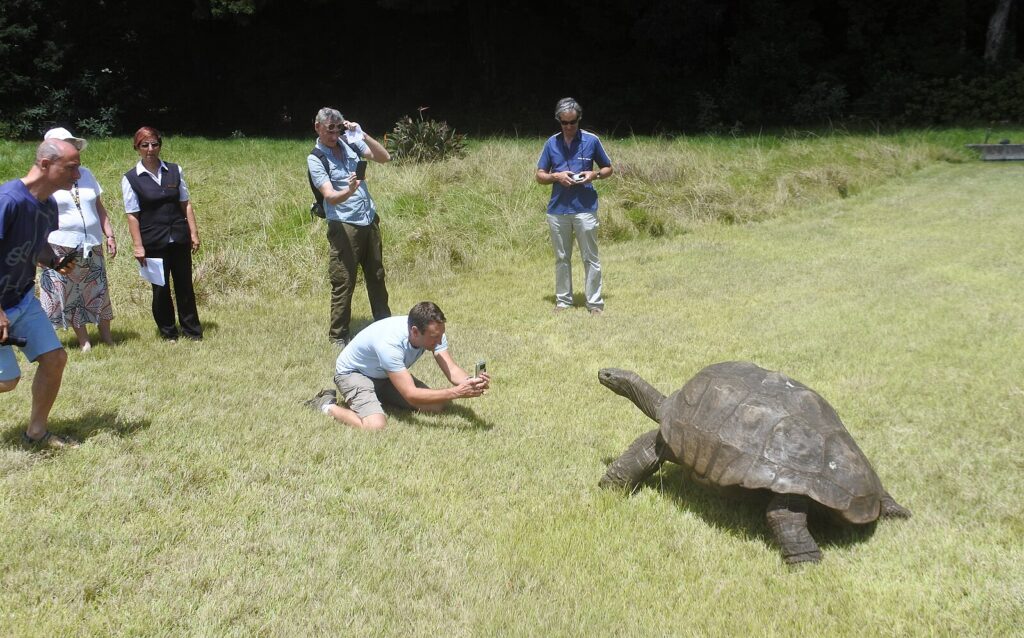
Jonathan has become much more than just a remarkable animal to the people of Saint Helena – he represents a living connection to their history and has become their most famous ambassador to the world. The island’s government has featured Jonathan on stamps, coins, and various official documents, celebrating his status as their oldest resident. Tourism materials prominently highlight opportunities to visit Plantation House and possibly glimpse the famous tortoise, making him a significant draw for the island’s vital tourism industry. Local schools incorporate Jonathan into their curriculum, using his extraordinary lifespan to teach children about history, biology, and conservation. When Jonathan celebrated his 190th birthday in 2022, the island held special commemorative events that drew international media attention, further cementing his cultural significance to Saint Helena.
Conservation Implications of Tortoise Longevity
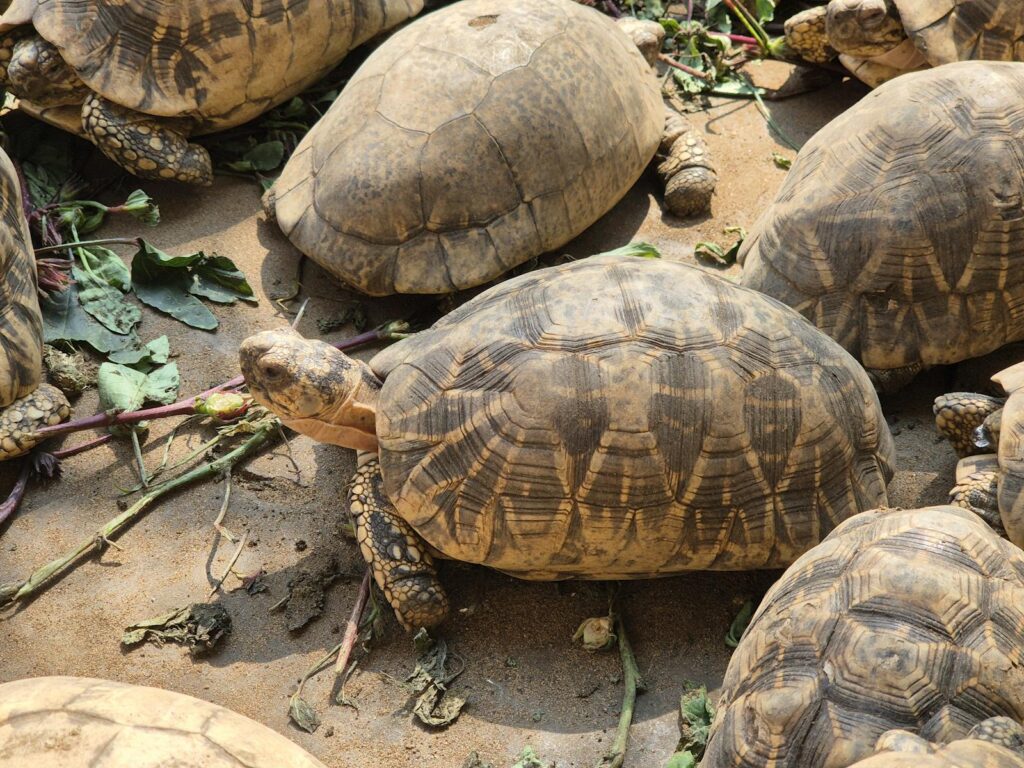
Jonathan’s exceptional longevity highlights important considerations for tortoise conservation efforts worldwide. Giant tortoises like Jonathan represent extreme examples of K-selected species – animals that live long lives, mature slowly, and produce relatively few offspring. This reproductive strategy makes tortoise populations extremely vulnerable to human exploitation and habitat destruction, as they cannot quickly recover from population declines. The fact that individual tortoises can potentially live for centuries means they carry genetic diversity from past eras, making each elderly tortoise particularly valuable to conservation geneticists. Additionally, long-lived species like giant tortoises often serve as ecosystem engineers, shaping their habitats over decades or centuries in ways that benefit numerous other species. Conservation programs for threatened tortoise species now frequently incorporate knowledge about their extreme longevity into management plans, protecting habitat for time frames that extend well beyond human lifespans.
The Science of Aging: What Tortoises Teach Us
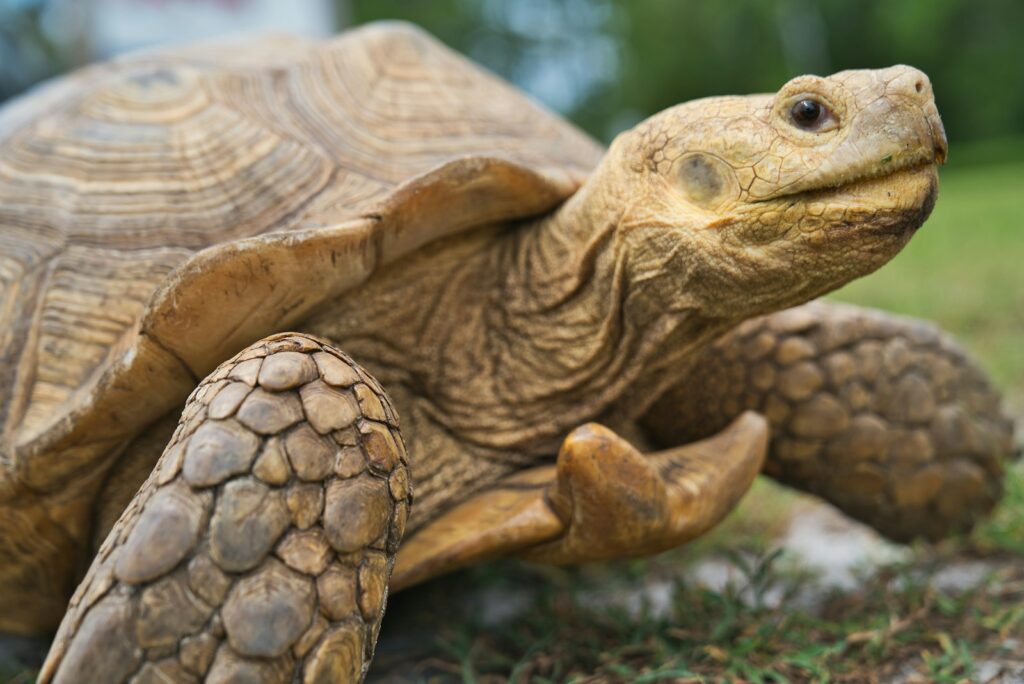
The extraordinary lifespan of Jonathan and other giant tortoises has made them subjects of intense scientific interest in the field of aging research. Unlike most vertebrates, which show pronounced physical and physiological decline with age, tortoises demonstrate remarkably little deterioration in organ function even after centuries. Researchers have identified several mechanisms potentially responsible for this negligible senescence, including enhanced DNA repair capabilities, reduced oxidative stress, and maintenance of telomere length. Some scientists have detected unique cellular pathways in tortoise tissues that appear to continuously rebuild damaged cells, preventing the accumulation of cellular damage that typically drives aging in mammals. Comparative studies between tortoise genomes and those of shorter-lived reptiles have revealed genetic differences that may explain their exceptional longevity. These discoveries could potentially inform human medicine, particularly in understanding and possibly treating age-related diseases by mimicking or adapting the tortoise’s natural anti-aging mechanisms.
The Future for Jonathan
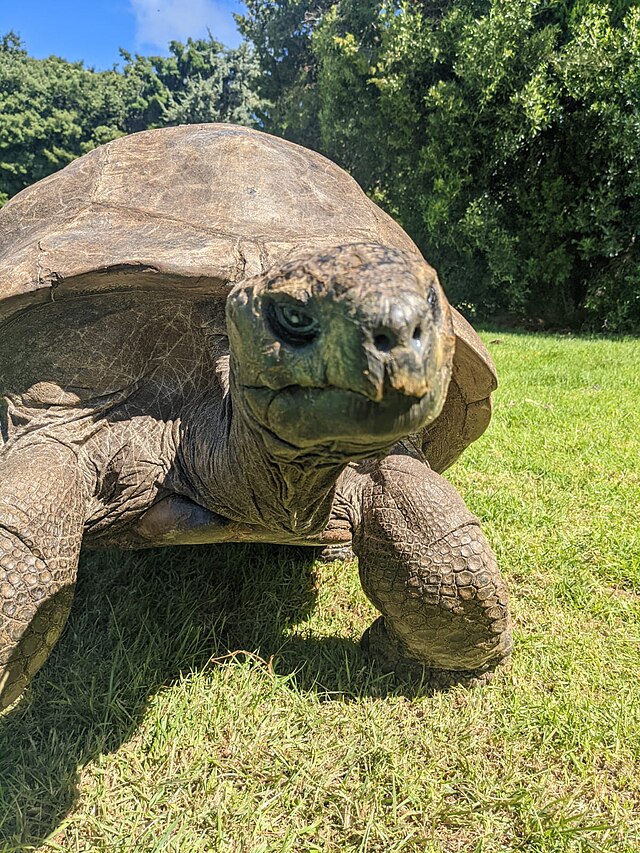
As remarkable as Jonathan’s longevity has been, veterinarians and caretakers remain realistic about his future prospects. While giant tortoises have no known maximum lifespan, Jonathan has begun showing some inevitable signs of aging despite his overall good health for his extreme age. His care team maintains a careful monitoring program, checking his weight, activity levels, feeding behavior, and general condition regularly. They have developed contingency care plans for any health emergencies, though intervention options remain limited given his age and species. Saint Helena has already begun considering how to memorialize Jonathan when he eventually passes, with proposals ranging from a life-sized bronze statue at Plantation House to a permanent museum exhibition documenting his extraordinary life. For now, though, Jonathan continues his daily routine of sunbathing, grazing, and taking slow walks around his territory, adding more days to his already record-breaking lifespan.
Jonathan’s extraordinary life spans nearly two centuries of human history and represents one of the most remarkable documented cases of vertebrate longevity. His story transcends mere biological curiosity, becoming a powerful symbol of resilience and the potential longevity encoded in certain evolutionary pathways. As scientists continue studying the mechanisms behind tortoise longevity, Jonathan’s legacy will likely extend far beyond his own remarkable life, potentially informing human understanding of aging and longevity. For the residents of Saint Helena and tortoise enthusiasts worldwide, Jonathan represents a living connection to history and a humbling reminder of how certain species experience time on scales vastly different from our own human perspective. In a world of rapid change, Jonathan’s slow, steady presence offers a rare glimpse into both the past and the extraordinary biological potential for life to endure through centuries.

